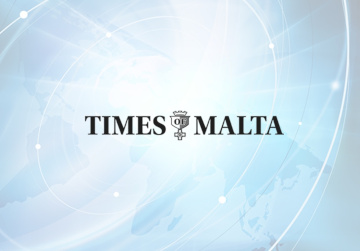Monitoring our seas from space
A team from the IOI-Malta Operational Centre, made up of Alan Deidun, Aldo Drago, Adam Gauci, Joel Azzopardi and Anthony Galea, recently conducted a research project in which they statistically compared ocean colour values from satellites with in situ...

A team from the IOI-Malta Operational Centre, made up of Alan Deidun, Aldo Drago, Adam Gauci, Joel Azzopardi and Anthony Galea, recently conducted a research project in which they statistically compared ocean colour values from satellites with in situ values collected in the field.
Ocean colour can be used to gauge the productivity of a marine area since it is the measure of suspended chlor-ophyll pigment as gleaned from space.
Chlorophyll, in turn, is a pigment found in microscopic plants known as phytoplankton (which are the basis of marine food webs) which is used by such organisms to harvest sunlight to make sugars in a process known as photosynthesis.
IOI-MOC has operational access to satellite ocean products, released by the Joint Research Centre (JRC) of the European Commission in this case, through its participation in a number of European-funded (FP7) programmes such as MyOcean and SeaDataNet.
These satellite products also measure the degree of turbidity of surface waters as well as wave heights and the presence of toxic micro-organisms (such as those present in red tides).
Satellite values of suspended chlorophyll (or ocean colour) are only useful in giving an indication of the values in the field which ultimately are the most accurate representation – to improve the accuracy of satellite products, these are occasion-ally contrasted statistically with field measurements to come up with possible mathematical corrections.
Deviations between satellite and field values are due to various possible factors, such as reflection from the sea surface, the occurrence of atmospheric particles such as aerosols, and so forth.
Knowing how much chlor- ophyll and phytoplankton exist in the water is important to get an idea of the importance of surface runoff from land, of the amount of productivity which in turn is important from the fisheries aspect, and to identify any possible phenomena occurring in the area of interest, such as upwelling.
This is of great importance, especially in view of Malta’s obligations under the Marine Framework Strategy Directive.
The research project in question also generated a complete annual series of ocean colour values for the Maltese Islands, a novelty for the Maltese marine area. Such a series indicates peaks in suspended chlorophyll values in January and in April-May.
The outcome of this research was presented last month by IOI-MOC staff at the SPIE Remote Sensing Congress in Prague and has been published as part of the congress proceedings.